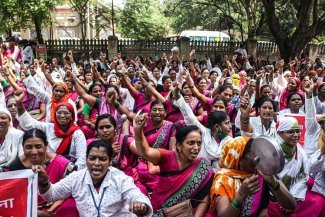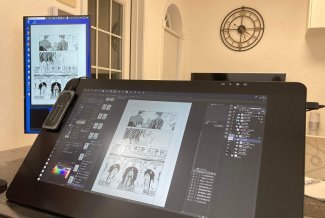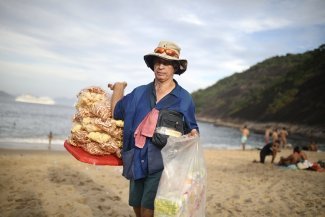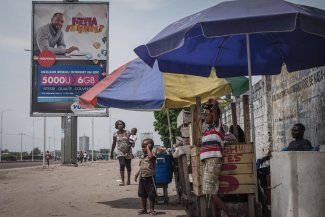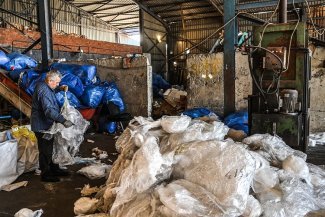
Every year as International Workers’ Day approaches on 1 May, Turkey’s government and its unions begin a ritual. The workers want to celebrate in Istanbul’s most prominent square; the government insists they do so elsewhere, far from sight. The standoff persists until the tear gas comes out.
Even on the one day of the year that the world sets aside to celebrate workers, their visibility is discouraged.
This “out of sight, out of mind” method of labour management extends well beyond the street and into the newsroom, with workers conspicuously absent from mainstream media coverage unless a story is simply too big to ignore – which usually means that multiple workers have died.
“The media is very effective in getting results,” MP Seyit Torun, deputy chair of the main opposition Republican People’s Party (CHP), says. “But since we’re stuck with a pro-government media right now, demands for rights unfortunately don’t succeed because they don’t get enough coverage due to government pressure.”
Torun and the CHP organised a march for hazelnut producers last September to protest government pricing policy. The three-day “Justice for Hazelnuts” march between the northern cities of Ordu and Giresun was a success, drawing more than 3,000 participants and leading to the state’s agreement to the producers’ demands.
Yet the mainstream media barely touched the story; such stories are more appropriate for social media or Turkey’s few remaining critical media outlets.
The media’s lack of interest in telling labour stories is directly related to the government’s lack of interest in hearing them. Over the years, as the more-critical outlets were browbeaten and displaced by pro-government counterparts owned by Ankara’s corporate allies, mainstream coverage became largely indistinguishable from official government press releases.
But the ill-fated coup of July 2016 and the state of emergency declared in its wake gave the state the perfect one-size-fits-all excuse to control the narrative.
“Abysmal” levels of press freedom
The bleak state of Turkey’s mediascape is already well-documented: at least 148 journalists are under arrest according to recent figures by the Journalists’ Union of Turkey (TGS), and over 150 media outlets have been summarily closed. Reporters Without Borders (RSF), which ranked Turkey 155 out of 180 on its 2017 Press Freedom Index, has described the level of media freedom as “abysmal”.
Torun says that the situation has gotten much worse in recent years, a sentiment echoed by Umar Karatepe, a media relations expert at the Confederation of Progressive Trade Unions (DISK), one of Turkey’s largest and most active labour confederations.
Karatepe says the coup’s effect on workers’ visibility in the media – which was never that high to begin with – has been dramatic.
“Take, for example, our press conferences,” he comments. “Back when we held a press conference the room would be packed with cameras. That all changed with the state of emergency.”
Noting the closure by emergency decree of channels like Hayat TV and IMC, which regularly covered labour stories, he adds: “We lost the television [stations]. It isn’t just that the channels where we were visible were shut down, it’s also a serious threat to all the rest. For example, back in the day we used to be regularly invited to CNN Türk.”
The government defends its crackdown, claiming that it is fighting existential threats and denying that those arrested were journalists. “Most of these are terrorists,” President Recep Tayyip Erdoğan told Bloomberg in September. “Many have been involved in bombing incidents or burglary.”
Meanwhile, critics claim that the crackdown has veered from the original goal of prosecuting those connected with the coup to targeting anyone deemed problematic for the ruling party. Some of those critics are themselves now in prison.
The narrowing of media pluralism and harassment
Whether the government’s actions are part of a legitimate fight against real threats or an authoritarian attempt to stifle dissent, the end result looks the same: journalists voluntarily or involuntarily limit coverage to a narrow range of topics and angles that will not bring trouble.
Stories that the government does not want to hear – e.g. corruption allegations or unhappy workers on strike – are left largely unexplored, except in a handful of smaller outlets. As RSF comments: “Media pluralism has been reduced to a handful of low-circulation newspapers.”
One can still come across labour stories like the hazelnut march in that handful of low-circulation papers and in some online outlets. These outlets are tenacious, but between their relatively unknown status and the lack of any television coverage, workers’ stories are a long way from being heard and even further from swaying public opinion.
Nevertheless, one would be mistaken to think that small size and limited influence spare those critical outlets from harassment.
Opposition news site Sendika (“Union”) is at the centre of one of the most absurd cases of media suppression. One cannot actually visit sendika.org; the site was shut down on July 25, 2015, shortly after a heated election in which Erdoğan’s ruling party lost its majority, leading it to turn to more aggressive tactics.
But each time that Sendika is shut down, it comes back with a URL bearing the next consecutive number: sendika2.org, sendika3.org, etc. As of the writing of this article, the site was available at sendika62.org.
Editor Ali Ergin Demirhan has a sense of humour about the affair: after launching sendika50.org in July 2017, he applied to the Guinness World Book of Records to be recognised as the “most-censored website that persevered”.
Pointing to a noticeable decline in labour coverage under the state of emergency, Demirhan notes that it is not due to direct censorship – after all, there has been no regulation barring such coverage – but self-censorship. Writers not only are not submitting new content under their own names, they are also asking that previous contributions be removed. “We have suffered a major loss of content,” he says.
“This fear not only prevents new content, but also effectively censors previously published content.”
The criminalisation of news
It is not just writers who are afraid; Demirhan notes that sources on whom he used to rely to confirm stories are now afraid of making statements that might get them in trouble. Even worse, workers, too, are now afraid of complaining to the press.
“The criminalisation of news keeps the worker, now afraid for his job, from airing his grievances,” he says.
Yunus Öztürk, founder of news site Sol Defter (“Left Notebook”), notes a similar phenomenon, in which workers have personally requested that they be removed from archived stories or photographs with which they previously had no problem.
“If you watch mainstream media you’d think there is no workers’ movement in Turkey,” Öztürk says, citing that as his reason for having established Sol Defter in 2010.
“It’s clear there is regression since 2010. There is regression in the news, regression in the number of people who want to write content under their own names…a demoralisation in the whole of the workers’ movement.”
Despite the lack of coverage, the workers have not gone away. Öztürk notes that one can still find them if one knows where to look.
“Labour courts, social media, both are lively and boiling over with workers’ news and workers’ reactions,” he says. “You just won’t see them in the mainstream media.”
One might initially think that workers’ absence from mainstream coverage is due to a lack of time to report on labour, given that half of the news cycle appears dedicated to long speeches by the president and the other half dedicated to analysing them. But there is actually policy at play.
Take, for example, the hazelnut march. There is nothing inherently wrong about covering the march, except that doing so commits two cardinal sins. First, it makes the opposition party look good. Any such stories already were actively discouraged behind closed doors, even before media suppression became so brazen.
Secondly, and more importantly, any labour-related stories, no matter how benign, could potentially discourage investors. That is a problem for an aggressively pro-investor ruling party, especially one that sees the relationship between employer and employee as a zero-sum game.
Nothing quite exemplifies the pro-business, anti-labour stance like President Erdoğan’s July assurance to foreign investors that the state of emergency was a potential tool to silence workers.
“We enacted the state of emergency so that our business community can work comfortably,” he said. “Anywhere there is a risk of a strike, we’re able to intervene directly thanks to the state of emergency. We say no, we won’t allow a strike here because you’re not allowed to weaken our business sector. That’s what the state of emergency is for.”
‘No economic footprint’
The government has actively prevented major strikes since the ruling party first took power in 2002 on 13 occasions, five of which came under the state of emergency. One large strike that was to include 14,000 workers was prevented on the grounds that “it endangered financial stability,” setting a precedent whereby Turkish workers must now find a way to strike without leaving any economic footprint.
And so, in a country where the government wants workers to be invisible and a media that delivers, workers are left to fend for themselves; workers like Hakki Demiral, who has worked at a shipyard in Istanbul’s Tuzla suburbs for more than 20 years.
Demiral and his union are organising a signature campaign for shipyard workers’ rights. Their demands include an end to unregistered work, rightful pay denied them by employers, and the return of shipyard work to the Dangerous Occupations Protocol list, from which it was recently removed.
Setting up a stand in front of a different shipyard every day – there are around 50 in Tuzla – he already has collected more than 1,000 signatures in a couple of weeks. Yet you won’t see the plight of the shipyard on Turkish media.
“We live in a country where the press is silenced, where it is bought, where the pro-government media writes on the president’s orders,” Demiral says. “This is to be expected.”
The Tuzla shipyards are actually a good example of how workers’ rights can benefit from visibility in the media. Workers in 2008 held two major strikes over a number of deaths and unpaid wages. As popular support grew, the media obliged, further broadening popular support and so on.
“The media couldn’t ignore a protest involving 5,000 to 10,000 workers,” Demiral says, and the shipyard bosses “got a little better”. A resolution was reached, improvements were made, although, perhaps not enough, and the government began monitoring both payments and safety. The workers proved that they really do have power when they can get their message out.
Things have changed much since 2008, when one might come across coverage of a worker or a few thousand in their local newspaper. The workers are more anxious, the media is more anxious, employers are more anxious and the government is much more anxious.
But the workers are still out there, collecting signatures and boycotting, and demanding their rights in court, even if few can see them anymore.


